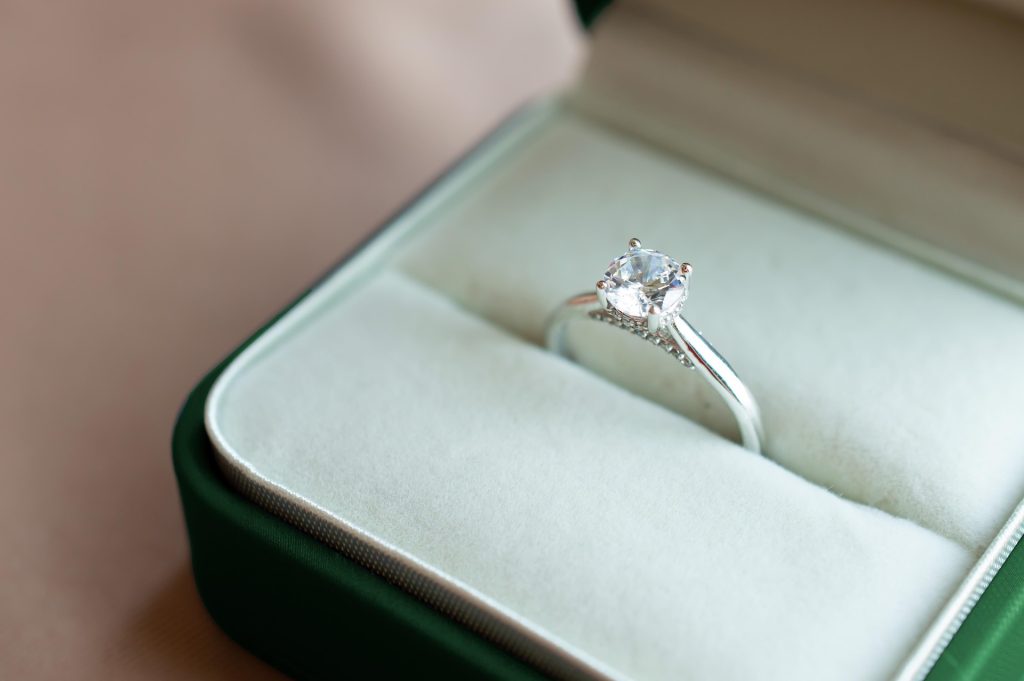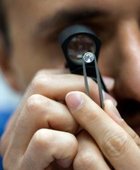Before organizing a diamond exhibition, it is essential to clearly define the objective of the event. Exhibitions can serve a variety of purposes, including showcasing high-end collections, introducing new designers, attracting investors, or selling inventory directly to buyers. Knowing whether the goal is promotional, educational, or commercial will shape every subsequent decision—from venue selection to promotional strategies. Identifying the target audience is equally critical. For instance, private collectors may respond differently than wholesale buyers or fashion industry insiders. Are you catering to industry professionals, affluent consumers, academics, or media representatives? Each demographic will expect a different experience and focus. Sellers interested in offloading inventory may seek affluent buyers and dealers, while museum curators may aim to educate or preserve historical context. This stage should also involve market research to assess timing, geographic demand, and competition from other similar events. In summary, aligning the exhibition’s purpose with the audience’s expectations ensures coherence in design, layout, and communication strategy throughout the event.

Securing a Suitable Venue and Establishing Security Measures
Choosing the right venue for a diamond exhibition goes far beyond aesthetics or location. The venue must be secure, prestigious, and logistically capable of handling delicate, high-value merchandise. Optimal venues include luxury hotels, private galleries, high-end convention centers, or even museums with jewel-specific halls. These spaces typically offer climate control, which is crucial for maintaining the integrity of fine jewelry over time, especially when dealing with antique diamonds set in sensitive materials. Equally vital are the security provisions. Partnering with specialized security firms experienced in protecting luxury items is a must. This includes not only on-site guards but also surveillance systems, metal detectors, access control systems, and secure transportation for the jewels. Insurance coverage is another critical aspect; exhibitors should secure comprehensive event insurance, and participating vendors should provide proof of their own coverage. Timing of the event may also dictate the level of security required—for example, public weekend events tend to have more foot traffic and require more robust protocols. These factors together ensure that the exhibition space is not only visually appropriate but also structurally and operationally safe.
Curating the Collection: Theme, Layout, and Presentation
The heart of any diamond exhibition lies in the quality and arrangement of the collection. A well-curated exhibition is guided by a central theme that ties together disparate pieces in a cohesive narrative. Themes might range from “Historic Cuts Through the Ages” to “Contemporary Lab-Grown Innovations,” depending on the exhibition’s goals and audience. Consistency of theme enhances the educational and aesthetic experience and helps curators select which items to include. Layout also plays a major role; pieces should be arranged to guide visitors through a logical progression, whether chronological, stylistic, or thematic. Lighting is a crucial component—diamonds exhibit different optical effects under varied lighting conditions. LED lighting with proper CRI (Color Rendering Index) and color temperature is essential to highlight brilliance and fire. Display cases should be anti-reflective, tamper-proof, and ideally designed for 360-degree viewing. Supplementary materials, such as placards, catalogs, or QR codes, should provide detailed information about carat weight, origin, cut, setting, and any historical or gemological significance. By combining thematic coherence with technical presentation, curators elevate the audience’s appreciation and understanding of the gems on display.
Collaborating with Designers, Sellers, and Industry Experts
No diamond exhibition can be successfully executed without a strong network of collaborators. This includes established jewelers, emerging designers, auction houses, gemological institutes, and even mining companies. These stakeholders contribute more than just products—they bring legitimacy, diversity, and depth to the exhibition. Partnering with certified gemologists or institutions like GIA (Gemological Institute of America) or IGI (International Gemological Institute) can lend credibility to the pieces on display, particularly when targeting educated or professional audiences. Jewelers and designers may also offer unique collections or create exclusive pieces for the event, providing a draw for collectors and media coverage. Exhibitors should formalize their roles through contracts specifying responsibilities, insurance requirements, commission structures, and promotional support. Additionally, hosting panels, workshops, or guided tours with these experts can enrich the visitor experience and foster educational dialogue. These collaborations enhance both the quality and reach of the exhibition, making it more than just a sales floor—it becomes a curated experience and a hub of industry engagement.
Marketing and Public Relations Strategy
A robust marketing and PR strategy is essential to attract both foot traffic and media attention to a diamond exhibition. Marketing efforts should begin months in advance and target both digital and traditional channels. High-quality visuals of the collection should be prepared for use in advertisements, email campaigns, and press releases. Social media platforms—especially Instagram and Pinterest, given their visual nature—are effective tools for generating buzz and engaging potential attendees. Collaborations with influencers in the luxury lifestyle, fashion, and jewelry sectors can further extend reach. Meanwhile, traditional media should not be overlooked: secure interviews with curators or featured designers in trade publications, lifestyle magazines, or even local news outlets. Exclusive preview nights for VIPs and press can generate early word-of-mouth and media coverage. Press kits should include high-resolution images, bios of designers or key speakers, and background information about the exhibition’s theme and goals. Event registration platforms and RSVP systems also help manage attendance and provide insight into your audience demographics. Altogether, a multi-tiered promotional approach ensures maximum exposure and elevates the exhibition’s profile.

Managing Logistics: Transportation, Insurance, and Compliance
The logistical side of hosting a diamond exhibition is arguably as critical as its visual or thematic elements. One of the most sensitive aspects involves the secure transportation of diamonds and jewelry, especially if vendors or collectors are sending pieces from other regions or countries. This requires collaboration with specialized logistics firms familiar with transporting high-value assets. These firms often offer armored transport, GPS tracking, and handlers trained in high-security procedures. Every item must be logged and photographed prior to shipment to ensure accountability. Insurance coverage should be meticulously verified—event-wide policies may cover general liability, but each exhibitor should provide documentation of their individual insurance covering theft, loss, or damage. Legal compliance is also essential, especially when crossing international borders. Exhibitors must adhere to import/export regulations, customs declarations, and possibly Kimberley Process requirements for natural diamonds. Additionally, temporary admission paperwork may be necessary to avoid import taxes. Compliance with local laws regarding sales tax, consumer rights, and commercial transactions should also be observed. Preparing for contingencies—such as weather delays, courier issues, or customs holdups—can make or break the seamless execution of an event.
Hosting the Exhibition: Staff, Flow, and Guest Experience
Once the exhibition is live, the smooth coordination of staff, visitor flow, and hospitality becomes the focal point. Staff should be well-trained in customer service, knowledgeable about the diamonds on display, and briefed on emergency procedures. Docents or guides—especially those with gemological expertise—can enhance the educational value of the experience for attendees. Strategically managing guest flow is vital to ensure a comfortable and secure environment. This includes signage, visitor pathways, and regulated access to high-value display zones. Timed ticketing, staggered entry, or separate VIP areas may be necessary depending on expected attendance and the exclusivity of the event. Hospitality features such as refreshments, comfortable seating areas, and cloakroom services also contribute to an elevated guest experience. For sales-focused exhibitions, trained sales representatives should be discreetly present to engage with interested buyers and facilitate private consultations. Digital kiosks for browsing certificates or requesting follow-ups can also enhance interactivity. Feedback stations—either physical or digital—are useful for collecting post-event data to improve future exhibitions. By focusing on professionalism and thoughtful engagement, organizers can create an environment that is both refined and commercially effective.
Post-Exhibition Activities: Sales, Follow-Ups, and Evaluation
The conclusion of the exhibition marks the beginning of a new phase: post-event evaluation and relationship-building. For commercial exhibitors, following up with leads and potential buyers is essential. Contact information collected during the event—whether via RSVP systems, interest forms, or digital sign-ups—should be organized and segmented for follow-up communications. Personalized emails, exclusive offers, or virtual consultations can turn interest into transactions. For curators and non-commercial hosts, post-event activities may include publishing event highlights, video recaps, or catalogs to maintain momentum and build a brand legacy. Evaluating the success of the exhibition requires both quantitative and qualitative analysis. Key metrics might include attendance numbers, sales figures, media mentions, and social media engagement. Collecting feedback from attendees, exhibitors, and staff helps pinpoint areas for improvement. Budget reconciliation is also crucial—did the event meet its financial goals or sponsorship expectations? Lessons learned from the current event should be documented and integrated into planning for future exhibitions. A well-managed post-event strategy not only maximizes the impact of a single exhibition but also strengthens relationships and enhances the reputation of the organizer for future endeavors.
Legal and Ethical Considerations in Diamond Exhibitions
Ethical considerations have become increasingly central in the diamond industry, and exhibitions are no exception. Transparency around diamond sourcing is not only a legal requirement in some jurisdictions but also a growing consumer demand. Exhibitors should be prepared to disclose whether pieces are natural or lab-grown, conflict-free, recycled, or compliant with ethical sourcing protocols such as the Kimberley Process. Signage and documentation should clarify these aspects, helping to educate attendees and instill confidence in potential buyers. Legal issues may also arise in labeling, sales practices, and product claims. Misrepresentation—intentional or accidental—can result in serious legal consequences and reputational damage. Exhibitors must ensure that all claims about origin, carat, clarity, and treatments are backed by proper documentation, ideally certified by recognized gemological authorities. Intellectual property issues should also be considered, especially if showcasing exclusive designs or works by living artists. Agreements with designers and vendors should cover the use of images, replicas, or promotional materials. By proactively addressing these legal and ethical responsibilities, organizers can present an exhibition that is not only luxurious but also principled and trustworthy.




